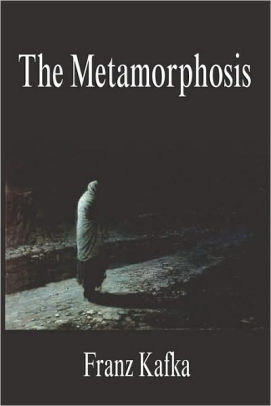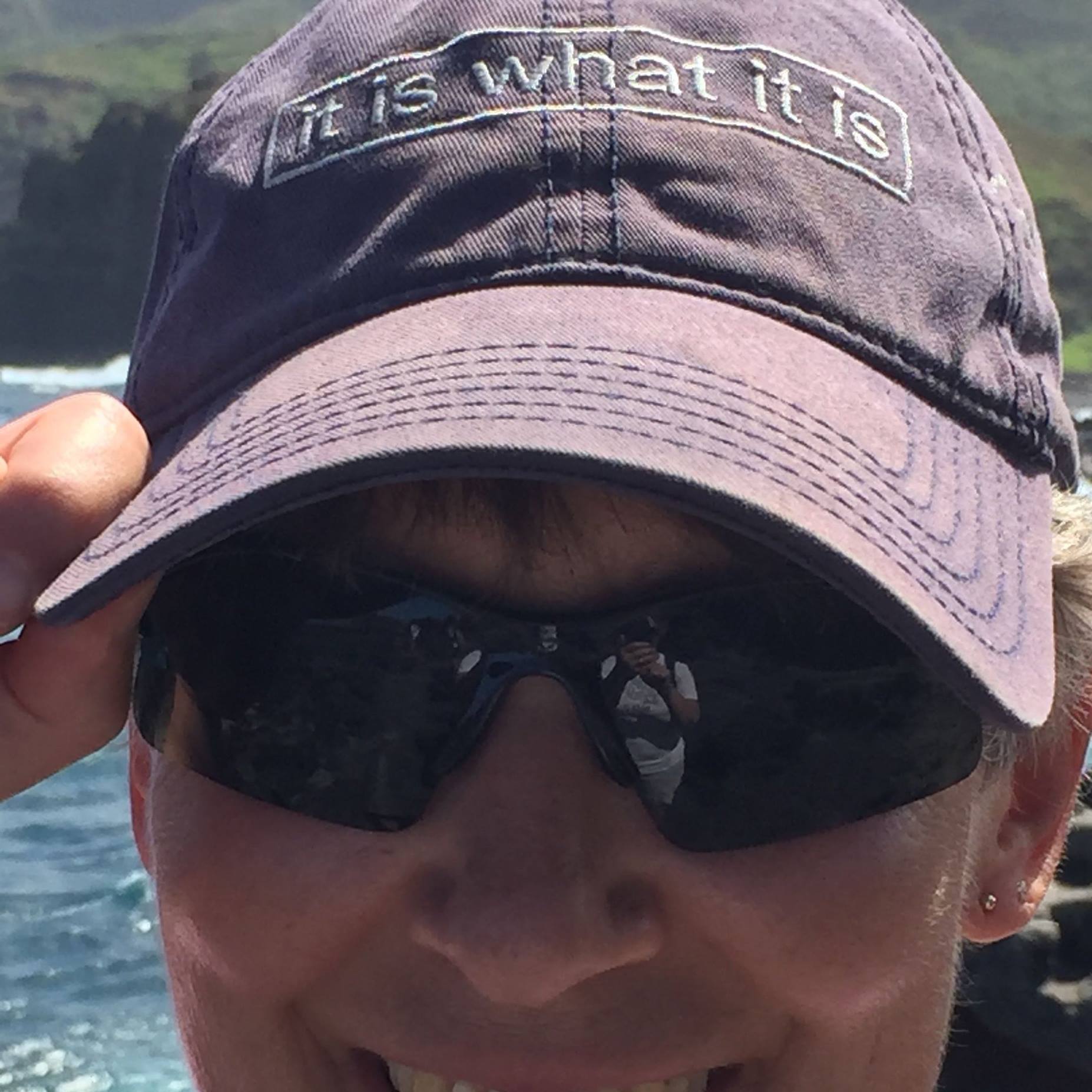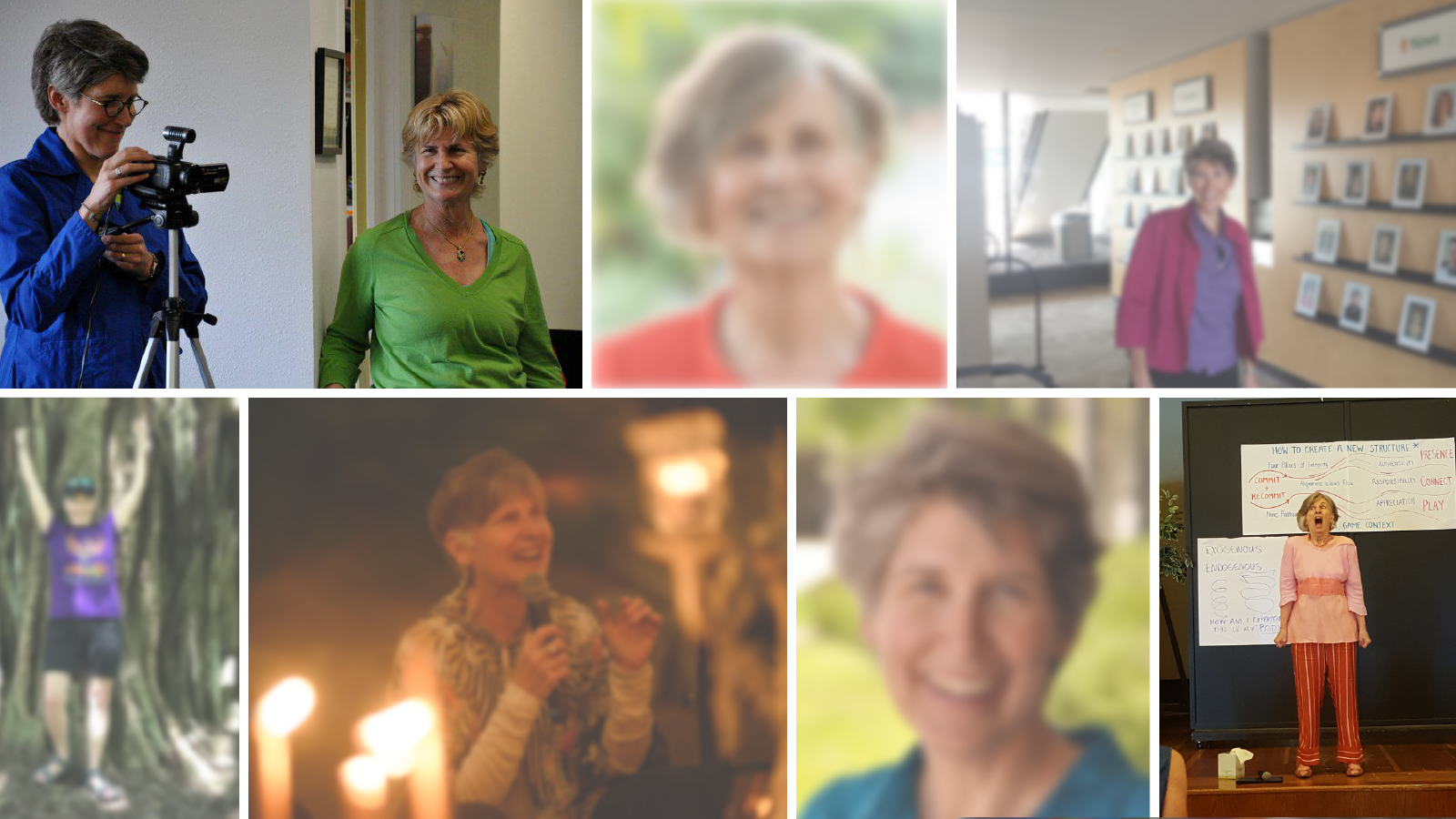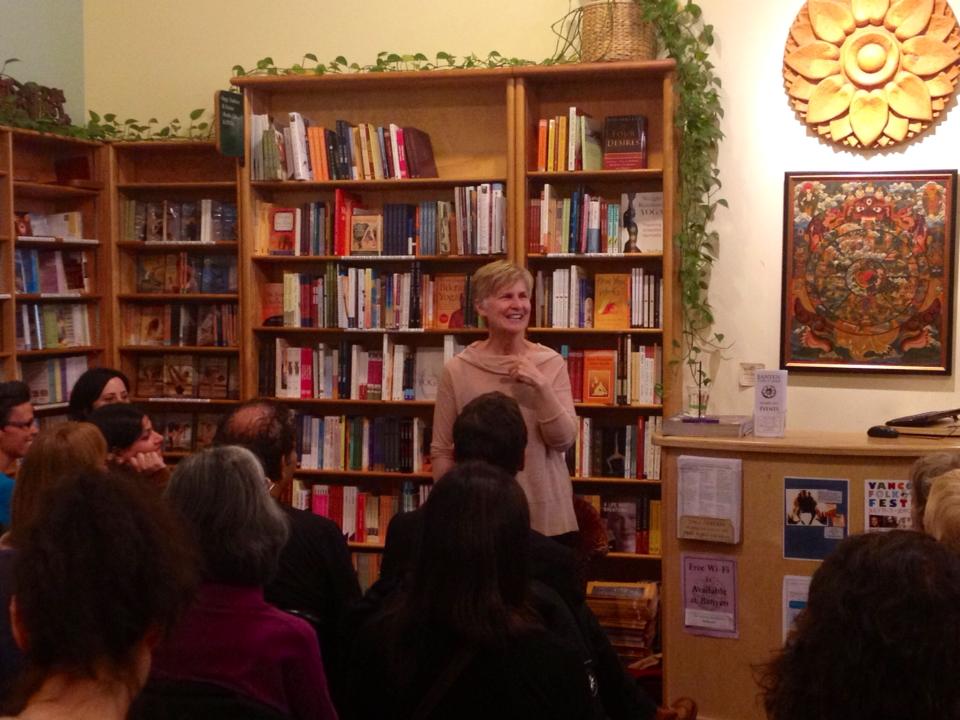Kathlyn (Katie) Hendricks, PhD, BC-DMT, and Julia (Julie) Colwell, PhD, are pioneers in the field of human consciousness, conscious leadership and human potential. Nancy Kepner, co-founder of Crafted Leadership, LLC, sat down with Katie and Julie to get their perspective on a range of issues. Crafted Leadership’s mission is to spread conscious leadership throughout the global workplace, using Julie and Katie’s work as the foundation.
Nancy: I find it interesting that people talk about “soft” skills. It seems to me they are the hardest for people to do.
Katie: To me, that viewpoint circles all the way back to unconscious fear. Fear has to be addressed. When fear is addressed, such as someone giving a talk, and saying publicly–“Oh, I just noticed that I was holding my breath and I had this fear thought”– everybody in the audience relaxes. Everybody exhales and experiences here we all are together.
Nancy: It’s the contagion you were talking about.
Julie: Yes. And we’re acknowledging, “We all have bodies so maybe we need to do something to take care of them.”
Nancy: My observation is you have both worked with people who are suffering in the most significant ways. I haven’t always seen that personally, but I’ve seen some, and I’ve heard some, about the type of issues you have worked with.
What I have observed is that you come from the approach of, “You [the other person] are fundamentally whole, and I’m not going to pathologize you.”
Katie: Yes.
Nancy: Which seems radical, because people want to pathologize other people, make something wrong. This is what I’ve observed in corporate America, too.
Will you speak to that, the approach of working with people in trauma and wholeness, and the fundamental way you see people and the way you approach them?
Julie: That is something that I had to unlearn and relearn. I learned in our culture (or who knows from where) that there is something basically wrong with me and everyone else. That’s what I learned. That was my starting point and I come to find out, how many Americans think.
Katie: I think that’s what everybody learned.
Julie: What a horrible thing. Although, finally, I’m understanding that’s not universal. That’s not a human thing. Apparently there are cultures that don’t believe that, that don’t have our levels of self-hatred. I remember reading about when the Dalai Lama heard about self-hatred in the West, he put his head down and cried.
One leads to the other. If there’s something fundamentally wrong with me, I have to hate myself. Right? I just have to.
That is not what I believe anymore.
I believe that we are divine, that we came in as essence. That is who we are. But then life happens, a series of many “somethings” that happen, and those somethings trigger us into a threat response, and from there those parts of us that behave badly show up — because those parts are just scrambling to survive.
From that threat response we are capable of doing atrocious things. We will commit atrocities from our strong need to survive, especially in the context that there is something wrong with us anyway. Or maybe there is something wrong with you, so I get to hurt you. To get out of that context, to shift that context is everything.
If there never was anything wrong with me, then all I need to do is heal those parts that gets so reactive, heal those states they go into.
If those parts go into shame, to understand that shame is just a state. If they go into aggression and anger and want to kill, to understand — of course, that’s part of being a mammal who is responding to threat. We all have that. We all have that response, every single one of us. It’s built in. That’s where the depth of our collective shame comes from, I think, the thought that we shouldn’t have those parts of us.
We all have reactivity, we just need to figure out how to be in relationship with it. Then we can come back to our natural state of divinity. By divinity, I just mean we are born in joy. That is our natural state. That’s not an exceptional state, that’s not for one or two people who somehow won the lottery and got a new car — joy is our natural human state. It is our birthright. If we don’t live from that place, we have accepted some malarkey along the way instead of saying, “No, I’m entitled to that, and I’m going to do whatever I can to find my way back to that.”
Katie: Beautiful. What occurred to me as you were talking is that humans require attention as much as food and water, and it’s one of the main ways we try to control others. We deprive them of the gift of our attention. I think that attention gaps are at the root of trauma, of going into Reactive Brain — that idea there is something fundamentally wrong.
Particularly, very young, humans will do whatever we need to do to get attention. We’ve got to have it. I think that’s where the origin of what we call persona comes from. No matter how cute you are, at some point your essence becomes inconvenient for your caretakers. So you develop “doing” rather than “being.” The doings are those ways that we organize ourselves. That’s the beginning of control. I can’t just be me because I’m not getting that nutrient. So, I’ll organize myself differently, which takes muscular, physical-muscular energy.
All of our personas cost. They all take effort to hold on, to organize, to be super-responsible, or to be a hard-worker, to be a rebel, or a loner. All of those patterns, roles shape your body, shape your energy, your breathing, your interactions, how you organize yourself. We forget that WE did that. I organized myself this or that way, and what’s underneath that is I so desperately want attention and I’m afraid I’m not going to get it. Most people are so squished down under there simply wanting to be acknowledged.
I see. For example, I see that someone got hurt there, in that place, at that time. I see where there is a disconnection. I’ll see some of you just went away. I don’t go away. I create a kind of tractor-beam. When I am connecting with somebody, I invite my attention to flow with their attention, to open up anything that they had to withdraw their consciousness from. Whether that was, “I can’t be angry because I get in trouble when I’m angry,” or “I want that but you gave it to my brother, so I’m going to work hard and I’m never going to ask for anything.” I shine awareness and presence on places, times, interactions where consciousness had to be withdrawn to survive, and then those broken places can be welcomed into wholeness again.
These are ways that we disconnect from joy, play, and creating (which is basically what we are here to do), and people have generated all of these other games. If we look at what humans do, we only need a couple of hours every day to actually take care of our basic needs. The rest of the time we have created these games, which are all about attention and who gets the attention, who gets to keep the attention, who gets to hoard the attention, who gets to hand out a little bit of the attention, how you have to change yourself in order to get attention, etc.
Underneath that, it’s all about realizing you can make different choices about how you organize yourself. You can best reorganize your choices when you’re looked at with love, and appreciation, and inclusion, with welcoming.
I love the way our work has developed. It’s inclusive. I say it’s a come-as-you-are party.
Everything gets to be included. The way that we often deal with dramas is with play. So, someone comes in and they are complaining, I have them do that more. Dress up as their curmudgeon. Someone who just came to a seminar recently and felt so much like a victim. So, I said, “Come dressed as your full-out victim tomorrow.” She did and nobody recognized her. She was able to actually give attention to her own suffering and how she had been organizing herself. Other people were able to say, “Oh, wow. I never knew that about you, but also, thank you for letting me see more of who you are.”
To be this way, rather than, “I’ve got it all together and I’ve got my suit on.” We long to be deeply known. That, to me, is a great treasure of my relationship with Gay. I feel that every day I know him more, which seems impossible after almost 40 years that I know more of him, but I also have this sense of freshness and brand new-ness.
That vertical dimension, I think that’s really the spiritual dimension. No matter how we spread out over the world and try to run over everything, it’s only that depth of connection and then invention that really allows us to feel our full humanness, and human potential.
Nancy: That sounds like a well-spring.
Katie: Yes, it is a well-spring.
Nancy: Are you both saying that attention (not attention that’s pathologizing), but pure attention, loving attention, is a way to, maybe not heal trauma, but at least address it?
Katie: Yes. I think curious attention creates the opening. It’s like inviting a person into a warm pool. I’m not the pool, I’m the invitation to the pool, and consciousness is the pool. People will stand on the edge of the pool and have opinions about it, and see the people who are in there, but they won’t get in the pool. The whole idea is to get into the pool. That’s where I see the most choice for people.
“Is it safe?” That’s a phrase I haven’t heard in years. You used to hear it a lot, back in the 80s and 90s. People would come into seminars and, say, “Is it safe here? I don’t think it’s safe here. I don’t feel safe.” That hasn’t happened anymore at all. There’s something we’ve been co-creating that is, “Come on in. You are welcome. However you are, you are welcome here.” Which is not the same as, “You are welcome to just take over and run power over here” but it is, “You are welcome to be yourself here. You can let go of the shell, the thickness and disconnection. “ It’s what [Wilhelm] Reich called “armoring.” There’s an actual, physical contraction that keeps people from feeling joy. It’s the cockroach, the metamorphosis. Kafka (in The Metamorphosis) was talking about the shell that most of us have to put on.

Julie: I’d like to say a little bit more about trauma, to unpack it a little bit.
So, what is trauma? Basically: we feel overwhelmed in the face of a survival threat. We feel helpless, we feel unable to address [the threat], be active, and do something.
Katie: No choice.
Julie: No agency in the face of a survival threat. So, then, what is happening instead, if I can’t fully engage in what is happening, I have to put my attention elsewhere. That’s what is going on. That’s why it’s a trauma, because right now I can’t fully be present with how terrified I am, how enraged I am, how terribly grief stricken I am. Instead, I disconnect from that moment, and that’s why it is a trauma, because it’s still in my consciousness. It’s undigested. It’s unprocessed.
So, healing trauma is about putting my attention squarely on the experience that I didn’t want to be experiencing.
That’s how I digest emotion. How I process it is by being with this moment in time that I did not want to be with because I was so overwhelmed by it. If I can put my attention squarely on that overwhelming terror (or whatever it is) and be with a body-felt experience, that’s what is going to process it. To Katie’s wonderful point about attention, it’s all about attention and where do we put our attention, and can we actually tolerate this?
I was with a group of students last week and asked them, could they tolerate their emotional state right in this very moment? We were just sitting around. It’s warm, it’s nice. Could they feel as scared as they felt or as mad? People did not want to feel even those states that were pretty low intensity. So, being in the moment with what is happening is harder than it sounds.
To be with the, “Oh, my God, this is what frozen fear feels like. I want to throw up, I want to fall over and faint,” whatever. Or, “this is what rage is.” To be fully in the experience of that rage moment, very few humans seem to aspire to that.
Katie: So far.
Julie: Yes, exactly, we’re going there. To be in that [actual feeling experience] takes the oomph out of it. It’s just energy. It’s nothing else, just energy. “I can do this. It’s hard. I want to throw up for a minute, but I still can be in that.”

Julie invites people to be with what is (see cap).
Then it’s not trauma anymore. “I have returned my own sense of agency. I can tolerate this. I can stay in my body.”
Katie: There is such power in that shift.
Julie: If I can do that, I can do anything.
Katie: Yes, I can face any fear. I can step into any new experience because I know I will take ME with ME. The big trauma, I think, is being forced to abandon yourself. That’s a whole other aspect that is left out of most traditional therapeutic contexts. The attention just goes one way. You know, there’s the therapist and the patient, and the attention flows just toward the patient.
I can remember years ago working with a woman who had early sexual abuse. The value in facing into is that in the context of shared-attention, my attention is a jumpstart. I’m circulating my attention. I’m giving it to me. I’m including me.
—
Other blogs from this interview touch on fear, courage, emotions in the workplace, flags, their bodies of work, and the present world. Read the next installment, Part 7 — Flags.


